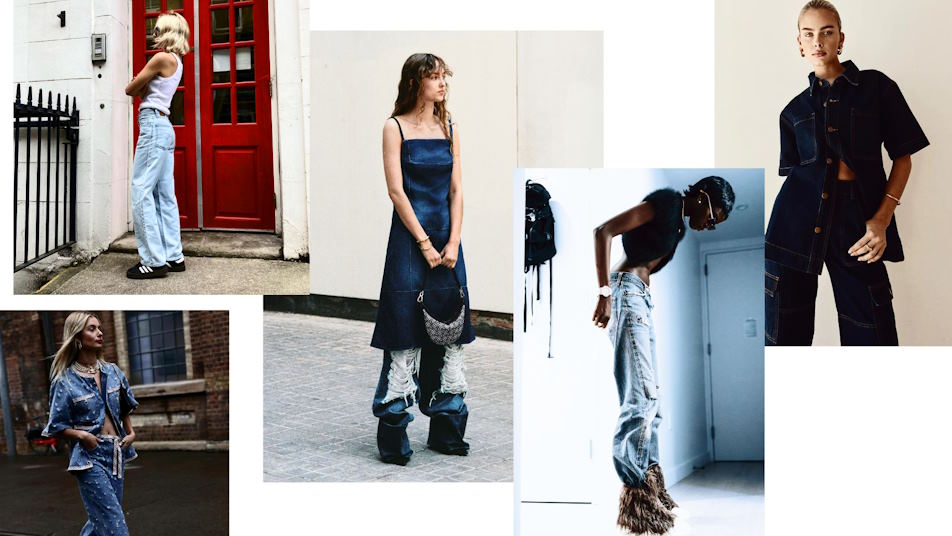Denim, once a humble and rugged fabric designed for practicality and durability, has undergone a remarkable transformation over the decades, emerging as a quintessential symbol of fashion and self-expression. Originating from modest beginnings as the preferred material for laborers and miners, denim has transcended its utilitarian roots to become an iconic fabric that traverses social and cultural boundaries.
Denim Goes Mainstream: From Rebel to Icon
- Emergence of denim as a symbol of rebellion in the mid-20th century
The mid-20th century marked a pivotal turning point for denim, as it transitioned from being mere workwear to a powerful symbol of rebellion. The rugged fabric, once associated with blue-collar labor, found new life as a statement against the norm. Icons like James Dean and Marlon Brando donned denim in films like “Rebel Without a Cause” and “The Wild One,” showcasing a nonchalant defiance that resonated with the youth. Denim’s rugged texture and rebellious spirit aligned perfectly with the growing disillusionment of the era, making it a garment of choice for those seeking to challenge societal conventions.
- Popularity among youth culture and countercultural movements
Denim’s rebellion wasn’t confined to the silver screen; it seeped into the fabric of youth culture. The 1960s and 1970s witnessed a surge in countercultural movements like the hippies and the anti-establishment youth, who adopted denim as a uniform of nonconformity. Patchwork denim, bell-bottoms, and embellished jackets became symbols of individuality and resistance. Denim, once reserved for work, was now synonymous with free expression and social change, echoing the era’s call for a break from tradition.

Designer Denim: Pioneering High Fashion
- The 1970s: Transition of denim into the world of high fashion
The 1970s marked a transformative era for denim as it made a groundbreaking leap from the realm of casual wear to the prestigious world of high fashion. Designers recognized the untapped potential of denim’s versatility and began to reimagine it as a fabric that could transcend its utilitarian origins. This shift represented a departure from convention, challenging the fashion industry to reconsider its perceptions of elegance and sophistication.
- Marc Jacobs, Calvin Klein, and the luxury denim revolution
Two names emerged as architects of the luxury denim revolution in the 1980s: Marc Jacobs and Calvin Klein. Their visionary designs elevated denim from its rugged roots to a realm of opulence. Marc Jacobs’ collaboration with Perry Ellis showcased denim’s adaptability through innovative cuts and finishes, while Calvin Klein’s minimalist approach redefined the fabric’s potential, making denim synonymous with high-end fashion. These designers transformed denim into a canvas for creativity, captivating fashion enthusiasts with their audacious interpretations.
Denim’s Reinvention: Washes, Fits, and Embellishments
- Introduction of denim washes and finishes for varied aesthetics
Denim’s evolution continued its remarkable trajectory with the introduction of washes and finishes that gave birth to a spectrum of aesthetics. Stonewashed, acid-washed, and distressed denim emerged in the 1980s, each possessing a unique charm that resonated with different styles. These treatments added character, depth, and a sense of history to the fabric, breaking away from its uniform, utilitarian appearance.
- Evolution of denim fits: from bell-bottoms to skinny jeans
Denim’s journey through fashion history is intertwined with the ever-changing landscape of silhouettes. From the wide-legged bell-bottoms of the 1970s to the sleek, form-fitting skinny jeans that took the 2000s by storm, denim adapted to prevailing fashion trends. This evolution demonstrated its chameleon-like nature, accommodating diverse body types and preferences while retaining its enduring appeal.

Sustainable Denim: Eco-Friendly and Ethical Practices
- Growing concerns about denim’s environmental impact
As denim’s popularity soared, so did the awareness of its environmental footprint. The fashion industry’s ecological impact came under scrutiny, prompting growing concerns about denim’s water consumption, chemical use, and carbon emissions. Consumers and activists alike began demanding more responsible practices, igniting a transformation within the denim landscape.
- Rise of sustainable denim production: organic cotton, water reduction, and recycling
In response to these concerns, the denim industry embarked on a journey towards sustainability. The rise of sustainable denim production introduced innovative practices such as the use of organic cotton, which curtailed the reliance on pesticides and harmful chemicals. Water reduction techniques, like laser distressing and ozone washing, minimized water usage during production. Recycling efforts gained momentum, giving new life to discarded denim through upcycling initiatives.
